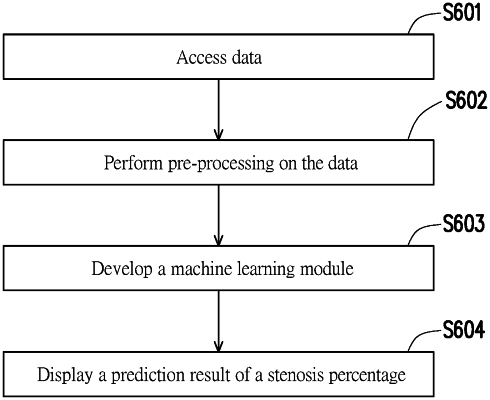| CPC A61B 5/02007 (2013.01) [A61B 5/026 (2013.01); A61B 7/02 (2013.01); G16H 50/20 (2018.01); G16H 50/30 (2018.01)] | 7 Claims |

|
1. An arteriovenous fistula stenosis detection system, comprising:
a sensing device, comprising:
a microphone, configured to be disposed at a first location of a patient, and configured to receive a sound signal and convert the sound signal to a frequency spectrum signal, wherein the first location is located on an extended path of an artery or a vein corresponding to an arteriovenous fistula located at a second location on the patient, and the first location and the second location are separated by a first distance; and
a server, coupled to the sensing device, configured to receive the frequency spectrum signal from the sensing device, determine a stenosis state of the arteriovenous fistula on the extended path of the artery or the vein corresponding to the arteriovenous fistula by using the received frequency spectrum signal as input to a machine learning model, wherein the machine learning model calculates an estimated stenosis percentage of the arteriovenous fistula, and transmits the estimated stenosis percentage calculated by the machine learning model to the sensing device or a mobile device,
wherein the machine learning model is trained by using a plurality of training frequency spectrum signals and an angiography information corresponding to the training frequency spectrum signals, wherein the angiography information indicates real arteriovenous fistula stenosis condition, and each of the training frequency spectrum signals is respectively obtained from a plurality of training locations, and each of the training locations is different from each other.
|